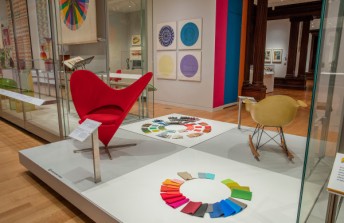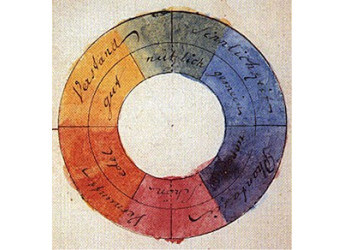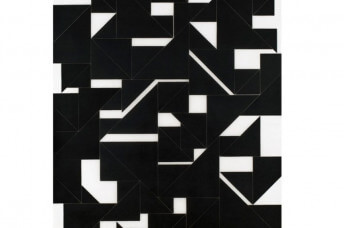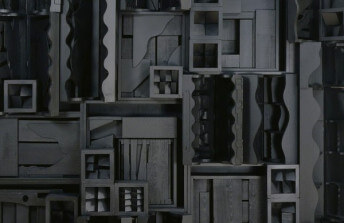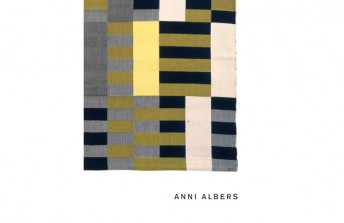(Re)Discovering Vivian Springford's Stain Paintings
Nov 25, 2020
Almine Rech Gallery in New York recently opened its second major solo exhibition of works by Vivian Springford. The artist has been the subject of a slow reassessment that began in the late 1990s, when, in her old age, her all but abandoned Chelsea studio—stuffed with a dust-encased cache of decades worth of paintings—was discovered by her caretaker. At the time of the discovery, Springford was practically anonymous, having not painted for more than a decade (she stopped painting in the mid-1980s after macular degeneration robbed her of her eyesight). She had not exhibited her work in more than 15 years. Yet, in the early 1960s, she was poised to take her place amongst the most famous artists of her generation. Just as her reputation was being established, Springford abandoned the Abstract Expressionist-inspired, gestural style that had brought her attention, adopting instead a soak-stain color field painting technique. She simultaneously all but ceased selling and exhibiting her works, except in a handful of exhibitions over several decades. She devoted the last twenty years of her career to developing a singular and instantly recognizable abstract visual language characterized by concentric, biomorphic rings of translucent color. When she died in 2003, she not only left behind a stunning, yet barely known oeuvre, but also left us with a compelling mystery—why would a talented and well connected artist who was on track to become famous suddenly walk away from the art market that loved her? The current exhibition at Almine Rech is but the latest attempt to bring the work of this artist into the spotlight. The nearly 20 works in the show further cement the reputation Springford deserves as a virtuoso, while also offering some hints why this artist might have ended up in seclusion rather than center stage.
Form and Nothingness
The concentric circle stain paintings that Springford spent the last two decades of her life painting are, to me, fundamentally different than her earlier works in the interplay they demonstrate between form and nothingness. Her earlier works favor opaque, dark, amorphous areas of color, painted quickly in the tradition of Chinese calligraphic mark making. These dark, gestural areas are full of emotion, and primeval in their presence, dominating the composition and offering the viewer a decisive focal point. Even if a specific form is unrecognizable in these paintings, the masses of dark paint create an unambiguous presence. On the contrary, in her later circular stain paintings, Springford embraces translucency and luminance, which prevents any particular element from dominating the compositions.
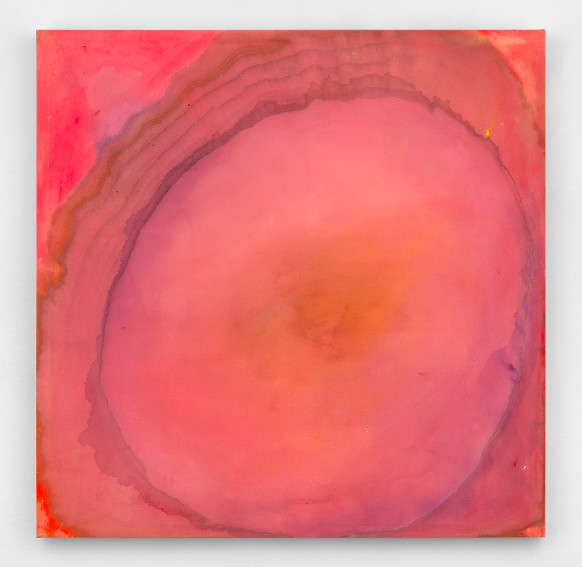
Vivian Springford - Untitled, 1972. Acrylic on canvas. 124.5 x 124.5 cm (49 x 49 in).
That choice in her later paintings to grant every layer of paint, every color, and every zone of the painting equal value suggests to me not only an aesthetic evolution, but that Springford went through an evolution in her mindset as well. By involving viewers in the interplay between surface, color, and light, these paintings invite us into their process of becoming. They are more about looseness and freedom than structure and emotion. They are pictures of transformation, suspended between a state of mastery and a state of total experimentation. Compared to the derivative feel of her earlier Abstract Expressionist works, these soak stain paintings have an authenticity to them that suggests they were painted by an artist who was comfortable with the idea of liminal spaces. Not needing certainty feels related to not needing acceptance, which may have something to do with why Springford so infrequently exhibited these works.
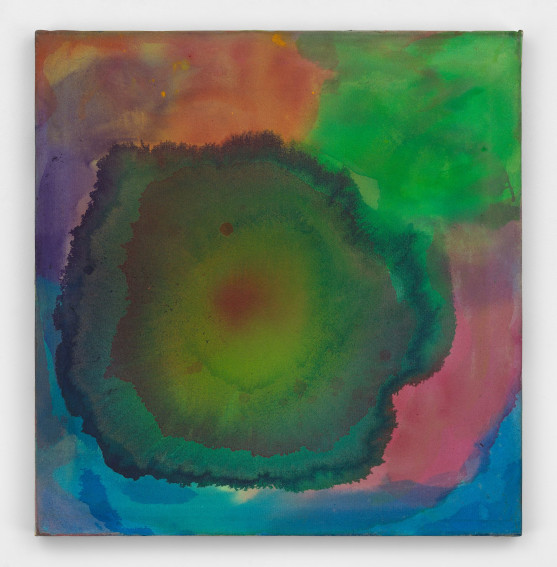
Vivian Springford - Untitled, 1983. Acrylic on canvas. 69.2 x 67.3 cm (27 1/4 x 26 1/2 x 1 1/8 in).
Measuring Time
It also feels natural to me to refer to these late soak stain paintings as process works. I do not mean to suggest that as objects they are less important than the processes that led to their creation. Rather, I mean that they reveal the importance of process. Like the concentric rings visible on the stump of a felled tree, the concentric rings of these paintings are records of the passage of time. Each ring reminds us of the time it took for a layer of paint to be applied, to spread, and to become one with its support. Nothing in these paintings is rushed. Their aesthetic presence is the result of gradually spreading forces, operating according to unanticipated rules. The paintings draw attention to the processes of their making, while also drawing our attention to the concept of processes in general.
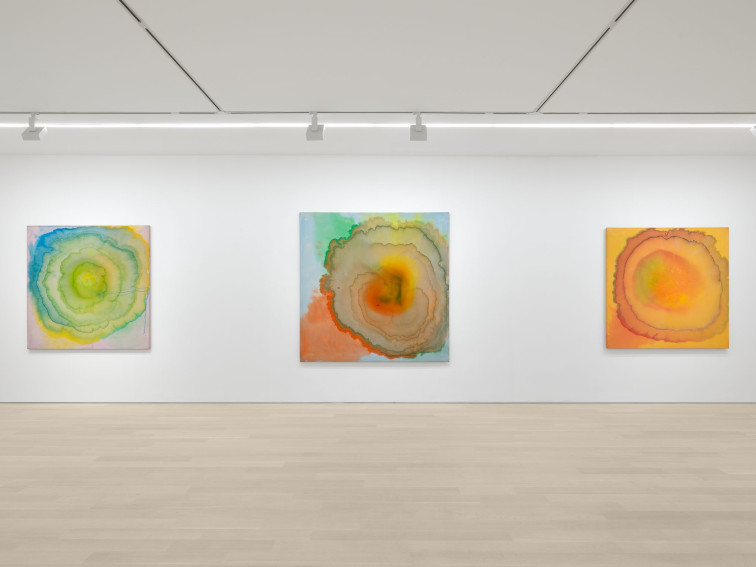
Installation views of Vivian Springford, Almine Rech New York, November 13, 2020 - January 13, 2021
Springford once said that to her, painting was “attempt to identify with the universal whole…. I want to find my own small plot or pattern of energy that will express the inner me in terms of rhythmic movement and color. The expansive center of the universe, of the stars, and of nature is my constant challenge in abstract terms.” As an artist, she was devoted to beginnings, like the universe the moment right before the Big Bang. Each of her soak stain paintings in fact resembles a universe right after the big bang, still expanding, exploding, metamorphosing into something singular, the end nature of which is unknown. She may have perceived of her entire oeuvre, and her entire career, in the same way as she perceived each of these paintings. This would explain why her responsibility was not exhibiting or selling the paintings, or even necessarily letting anyone know she had painted them. Rather, her priority was to understand the nature of her materials, discover the forces at work in her technique, and to set those forces loose in the worlds she created. Springford was god-like, I think, in her willingness to let the rest of us worry about where it all ends up.
Featured image: Vivian Springford - Untitled, 1971. Acrylic on canvas. 127 x 127 x 2.5 cm (50 x 50 x 1 in).
All images used for illustrative purposes only
By Phillip Barcio


